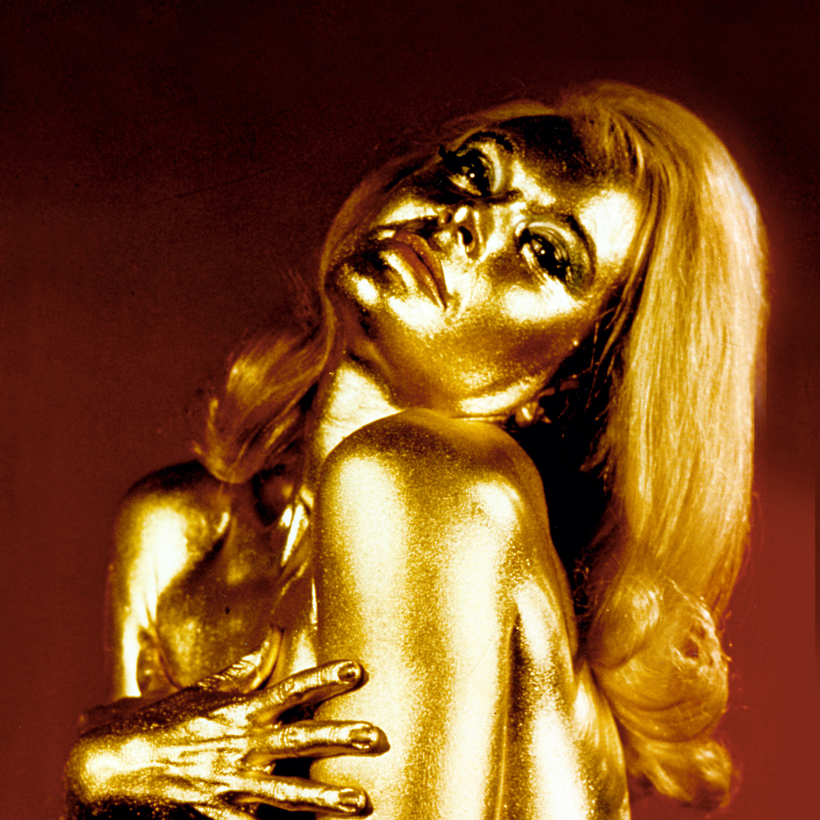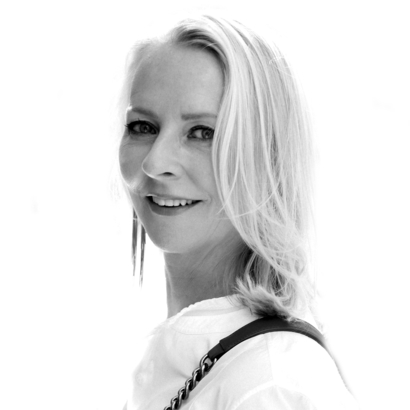One day at lunch in a fancy lady’s apartment many moons ago, I joined the hostess at her urging on a trip to the bathroom. It was a bit of a hike—the apartment had something like 20 rooms, most of them cavernous. But, phew, we made it. There on the gleaming marble shelves was a lineup of crystal bottles filled with various liquids. One was bright green. “Scope,” she said, beaming.
The fancy lady was proud of her drugstore haul but not so enamored of its packaging. So she did what one must under the circumstances, instructing her handmaiden to decant it into the Baccarat.
In Marrakech, also long ago, friends and I were invited for cocktails at Guy and Marie-Hélène de Rothschild’s villa. The baron gave us a tour past the fountains, over layered carpets, all the way to the rooftop, stopping in his wife’s bathroom, where he did what any generous host would do: flung open the medicine cabinet so we could pry. I spotted a bottle of Cetaphil cleanser, provenance Duane Reade, and thought, We really do have so much in common.
Once, rich people used rich products and hid the inexpensive workhorses behind closed doors and cut glass. Today, it’s hard to tell the pricey from the pedestrian, and that’s by design.
“Luxury on the down-low” is how John Demsey describes this growing group of beauty products. Demsey, a former president at Estée Lauder and current senior adviser at L Catterton, a private-equity firm, knows the territory and can rattle off its hierarchy. “There’s ultra-luxe, luxury, luxury prestige, and prestige,” he says. “There are hybrid situations sitting between mass and masstige, and prestige and luxury.” Got that?
One of the most successful of these inexpensive but rich-looking lines is the Ordinary, which is owned by Demsey’s former employer. The products are plainly packaged in dropper bottles and hold a few clearly named ingredients, without any complicated text or nonsensical complexes to confuse matters. In stores, the bottles are arranged reverentially, like jewelry. The least expensive is a niacinamide-and-zinc serum at $6. The priciest is a copper-peptide blend for $32. “They’ve been able to demystify ingredients and make them easily accessible and understandable to prestige customers,” Demsey tells me.
E.l.f., a brand that started by making $1 dupes of more expensive makeup, has become one of the most profitable beauty businesses in the U.S. Its #eyelipsface hashtag has more than 10 billion views on TikTok, and it aired an ad during the Super Bowl last month. There, Judge Judy (as Judge Beauty) lectured the accused, saying, “You’re telling me you need to spend $92 on foundation?”
I spotted a bottle of Cetaphil cleanser, provenance Duane Reade, and thought, We really do have so much in common.
Overspending is “reckless” and “dumb,” declares the judge. And who’s going to argue with her?
Luxurious beauty products used to be found solely behind the polished counters in department stores. Drugstores were the chaotic homes of garishly colored packages that seemed to scream from the display units. The gulf between them was visible and wide. Now, more and more products are slipping into that space, with quality ingredients and subdued packaging in gentle colors. Kerry Sullivan, the C.E.O. of Versed, a skin-care line that launched in 2019 and is sold in Target, describes the brand’s jars and tubes as “restrained” and “minimalist.” She distinguishes them from expensive products, saying, “You’re not going to have a box in a box, an extra cap on top of a cap, with custom components that are molded, with filigree and extra design elements that sometimes get thrown away before you put [the product] on your vanity.”
The same is true for a hair-care line called Odele, which sounds like the word for “share” in Norwegian, pointing to the intention that the shampoos and conditioners can be used by everyone who occupies the shower, ideally separately. Lindsay Holden, one of the brand’s co-founders, tells me about her earlier devotion to a $40 Kerastase shampoo that she kept from her husband and children. Most of the Odele products are $11.99 and come in bottles that are beige, stone, and sage green, like Farrow & Ball paint. “There’s beauty in what is simple,” she says.
Saltair’s body and hair products are housed in cheerful pink, orange, lilac, and green aluminum bottles “that make you smile every time you walk into your bathroom,” says Iskra Lawrence, the brand’s founder. And much as Lawrence loves expensive skin care, she has a tough time rationalizing a $50 body lotion. All 10 of Saltair’s cost $14 each.
It’s not just the packaging that distinguishes this new suite of products. It’s their sophisticated ingredients, their natural fragrances, their checklist of plant oils, antioxidants, and vitamins, and their vegan, paraben-free, and “clean” formulas—even though there’s no official definition of the term.
There’s no shame in buying these inexpensive items, and for that, we can thank TikTok, which “has played a huge part in lessening any stigma around cheaper products,” Lawrence says. Apparently, positive reviews trump gold jars.
These products also look as handsome on social media as they do on a bathroom shelf. “You’re proud to have it on your vanity,” says Sullivan of the Versed line. “You’re proud to recommend it. You’re proud to photograph it and put it on your social.... You’re not going to hide it under your sink.”
This new group of products doesn’t satisfy most of the criteria that define luxury goods: elevated, rare, expensive, and finely made with the highest-quality materials. But many consumers now have a different measure, which often includes values such as inclusivity, transparency, no animal testing, natural ingredients, and sustainable packaging.
So many of the old barriers dividing luxury, prestige, premium, and mass have crumbled. Sephora has stores within Kohls, Ulta set up shops in Target, and Amazon covers the whole high-to-low range. “Nobody knows what lipstick you’re wearing,” says Demsey. “Nobody knows what you use on your face.” Unless someone drags you into their bathroom and throws open the cabinets, the experience is private and personal.
Those fancy jars on their flocked pedestals with their dollhouse-size spatulas are starting to look a little fussy, a little dated, a little excessive. You could pour them into an antique flacon, but who has the time? Who has a handmaiden?
Linda Wells is the Editor at Air Mail Look


